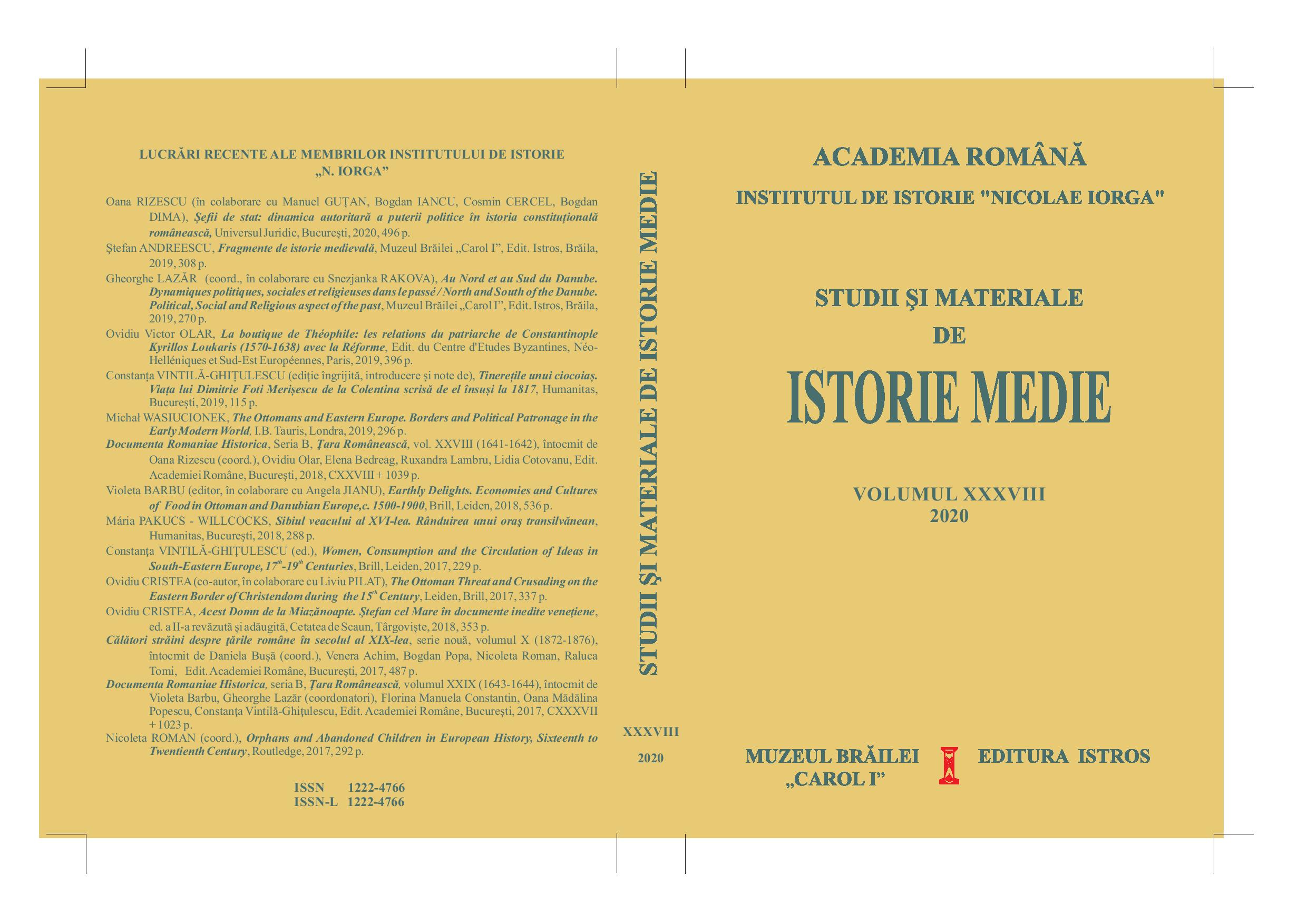CONTESTĂRI ALE PUTERII ŞI FORME ALE VIOLENŢEI
ÎN ŢĂRILE ROMÂNE (SECOLELE AL XVI-LEA ŞI AL XVII-LEA)
Political contention and forms of violence in the Romanian Principalities (16th–17th centuries)
Author(s): Maria Magdalena SzékelySubject(s): History, History of ideas, Political history, Middle Ages
Published by: Institutul de Istorie Nicolae Iorga
Keywords: contention; power; legitimate violence; non-legitimate violence; Romanian Principalities;
Summary/Abstract: In the 16th and 17th centuries, the Romanian Principalities lacked treatises of political theory or compendia of comments on works of classical philosophy with references to practices of political governance. For this reason, people’s perceptions of political contention and its outcomes can only be reconstructed starting from the odd allusion and comment scattered in the period’s written sources.In the Romanian Principalities the deposition of princes through violence was not routine practice, but the extreme solution to a political deadlock. Recourse to this form of violence can be explained by the lack of a clear, immutable system of succession. At the same time, the small number of princely assassinations must be connected to a conception of the monarch’s body as having a mystical dimension, as being sacred, immortal and intangible. If we attempt to construct a typology of the protesters, the first thing we notice is that the initiators and leaders of the protest movements were always members of the noble class (boyars). On the one hand, as members of the country’s political apparatus, the boyars had all the inside information and could identify correctly the right moment for an intervention. Their uprisings invariably took place in politically unstable moments and as such they are reliable indicators of major crises. On the other hand, as wealthy property-owners, only the boyars had the resources needed for sending envoys, for travelling inside and outside the country’s borders, and for assembling and maintaining armies. The pressure groups were not formed randomly, but more often than not relied on alliances founded on kinship, intermarriage or ritual. Such a group needed a leader – an individual who took the initiative and had the means of attracting like-minded malcontents. Participation in political contention was a major risk, which the participants acknowledged and accepted. Therefore, the links between leader and associates had to rely on discretion, trust and mutual loyalty (in some cases sealed by a binding oath).Some expressions of violence were considered legitimate and, as such, were tolerated by society; however, excessive violence – i.e. non-legitimate violence – was denounced and penalized. Violence against the ruling prince, irrespective of the causes, was not condoned and, when it happened, had to be justified and defended in the eyes of contemporaries and posterity alike through a discourse which presented the slain monarch as having departed from the model of the ideal sovereign and as having failed to fulfil his duties to the subjects. A prince’s assassination was a way of eliminating an unjust tyrant, thereby also removing the principles, norms and values he promoted. Even though most sources do not indicate the deeper causes of contention, it is likely that rather than being random acts of insubordination, such movements were the outcome of real, serious and deep-seated grievances, with solid ideological foundations.
Journal: Studii şi Materiale de Istorie Medie (SMIM)
- Issue Year: XXXVIII/2020
- Issue No: XXXVIII
- Page Range: 181-202
- Page Count: 22
- Language: English, Romanian
- Content File-PDF

